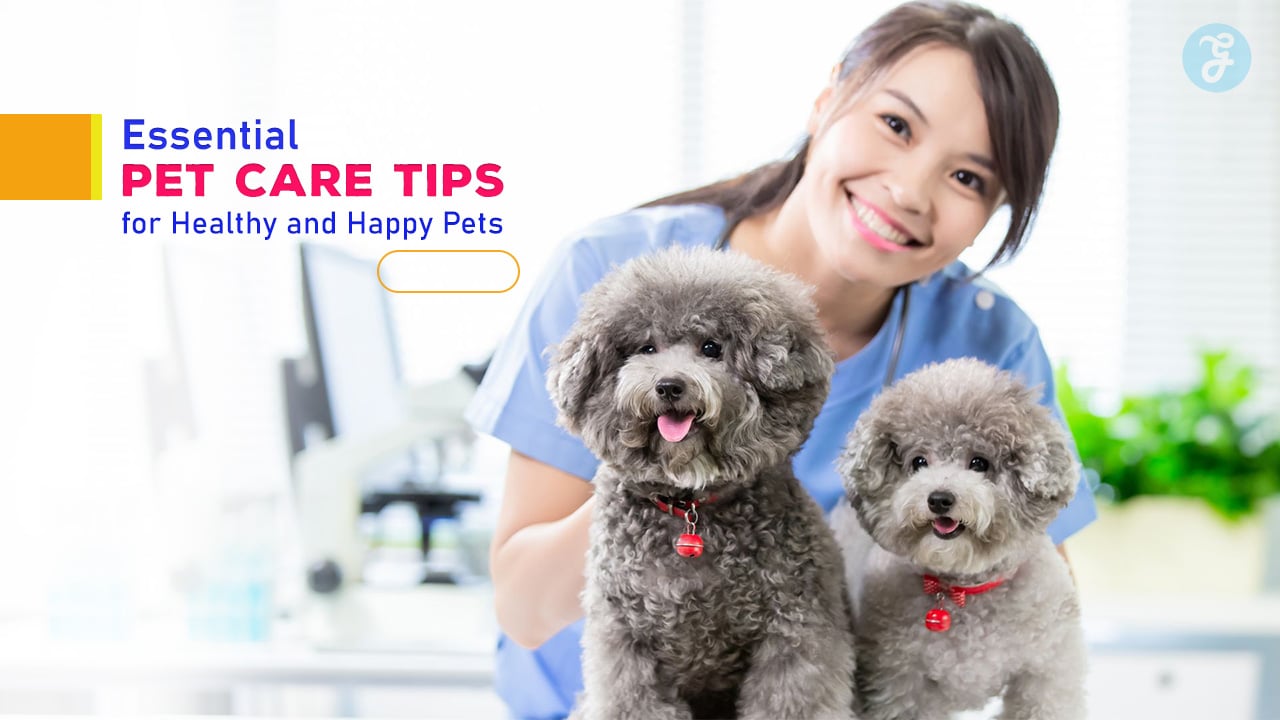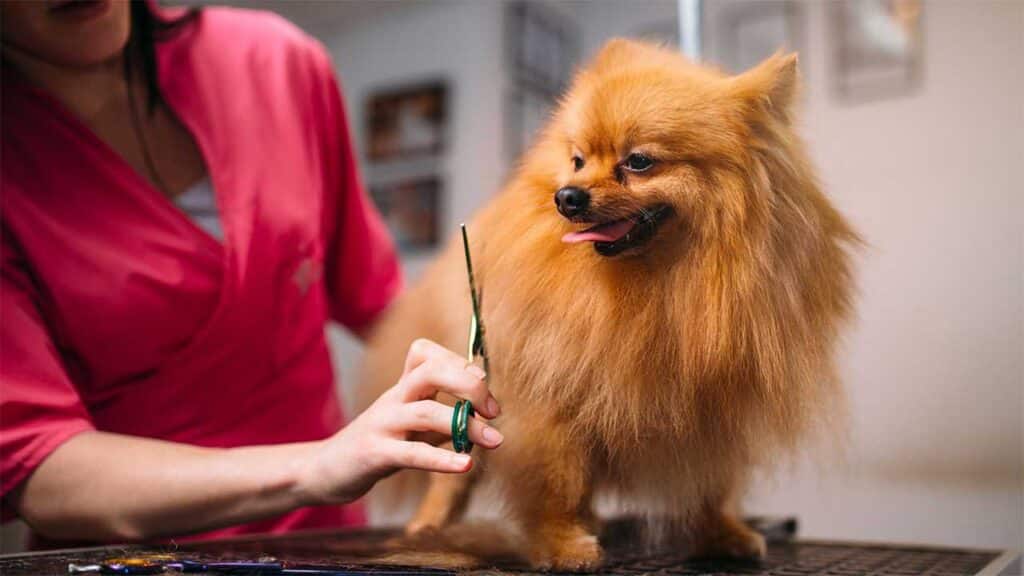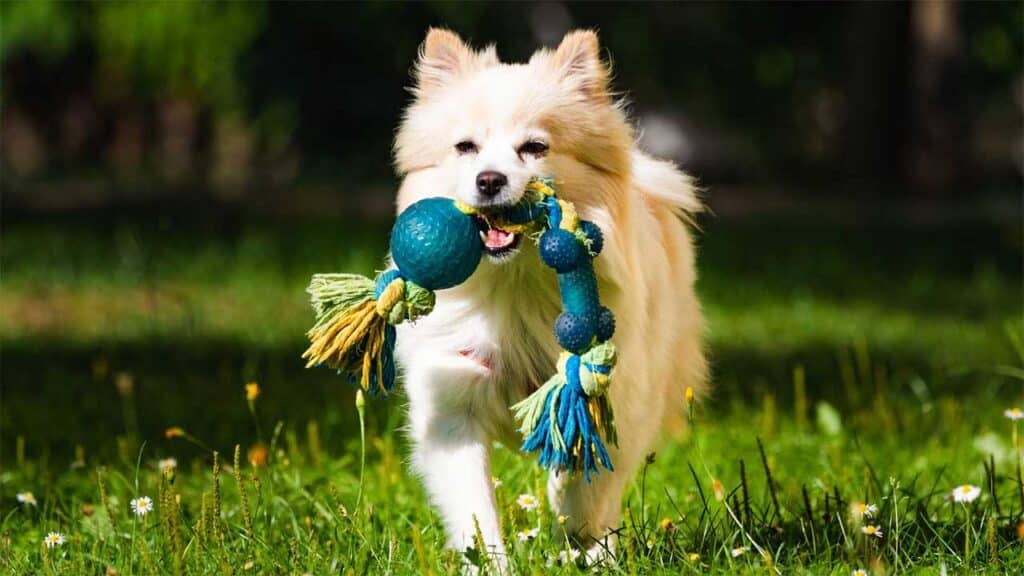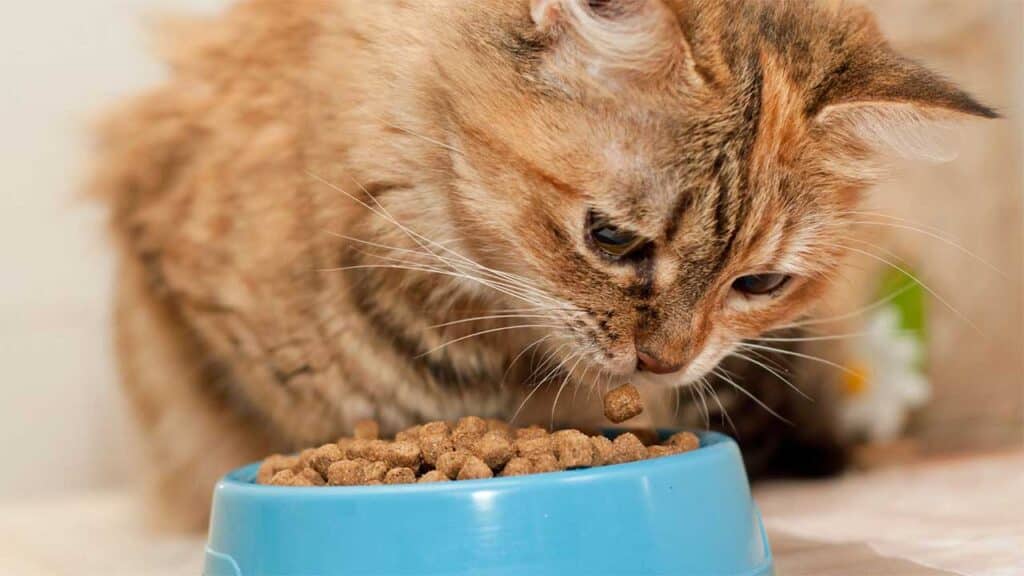Taking care of pets is a big job. Pets need a lot of love and care to stay healthy and happy. They count on us to meet their needs every day.
Giving your pet good care helps them live longer and feel better. This means feeding them right, keeping them clean, and taking them to the vet.
It also means giving them exercise and love. When you take good care of your pet, you both end up happier.
1. Regular Vet Check-ups
Taking your pet to the vet regularly is crucial for their health. These check-ups help catch problems early before they become serious. You should schedule visits at least once a year for adult pets.
Vets can spot signs of illness that you might miss. They check your pet’s weight, teeth, and overall condition. They also update vaccinations to protect against diseases.
During check-ups, vets can answer your questions about diet and behavior. They may recommend tests to screen for common health issues. This helps keep your pet feeling their best.
Older pets or those with health problems may need more frequent visits. Puppies and kittens also require more check-ups in their first year. Your vet can advise you on the right schedule for your pet.
Regular visits build a relationship with your vet. This makes future care easier if your pet gets sick. It also helps your pet feel more comfortable at the vet’s office.
Don’t wait for symptoms to appear before seeing the vet. Prevention is key to keeping your pet healthy and happy for years to come.
2. Balanced Diet
A balanced diet is key for your pet’s health. Give your pet the right mix of nutrients to keep them happy and strong.
Protein is very important. It helps build muscles and keeps your pet’s coat shiny. Make sure your pet food has good protein sources like meat or fish.
Don’t forget about carbs. They give your pet energy to play and run. Whole grains are good choices for carbs in pet food.
Fats are needed too. They help your pet absorb vitamins and keep their skin healthy. Look for foods with healthy fats like fish oil.
Vitamins and minerals are must-haves. They help with many body functions. A good pet food will have all the vitamins and minerals your pet needs.
Water is super important. Make sure your pet always has fresh, clean water to drink.
Ask your vet about the best food for your pet. They can help you pick based on your pet’s age, size, and health needs.
Watch how much you feed your pet. Too much food can make them overweight. Follow the feeding guide on the pet food package.
3. Daily Exercise
Regular exercise is key for your pet’s health and happiness. It keeps them fit and prevents boredom.
For dogs, daily walks are a must. Aim for at least 30 minutes of walking each day. You can split this into two or three shorter walks if needed.
Playtime is important too. Throw a ball or frisbee for your dog to chase. This gives them a good workout and is fun for both of you.
Cats need exercise as well. Use toys like laser pointers or feathers on a string to get them moving. Set aside 10-15 minutes twice a day for active play with your cat.
Remember to adjust exercise based on your pet’s age and health. Puppies and kittens have lots of energy but need shorter bursts of activity. Older pets may prefer gentler exercise.
Always watch your pet during exercise. Stop if they seem tired or uncomfortable. Provide fresh water before and after activity to keep them hydrated.
Regular exercise helps control your pet’s weight and keeps their muscles strong. It also improves their mood and reduces problem behaviors caused by boredom.
4. Clean Water Supply
Clean water is key for your pet’s health. Fresh water helps your pet stay hydrated and supports many body functions.
Make sure your pet has easy access to clean water at all times. Change the water in their bowl daily. This keeps it fresh and free from bacteria.
Choose the right water bowl for your pet. Stainless steel or ceramic bowls are good options. They’re easy to clean and don’t hold onto odors or bacteria.
Clean your pet’s water bowl regularly. Wash it with soap and water every day. Once a week, give it a deep clean with hot water and mild soap.
Some pets prefer running water. A pet fountain can encourage them to drink more. These fountains keep water moving and fresh.
If you’re out and about, bring water for your pet. Collapsible travel bowls are handy for walks or trips.
Watch how much your pet drinks. A sudden change in drinking habits could signal a health issue. If you notice this, talk to your vet.
Tap water is usually safe for pets. But if you’re worried about quality, filtered water is an option. Avoid giving your pet water from ponds or streams. It may contain harmful bacteria.
5. Regular Grooming
Regular grooming keeps your pet healthy and happy. It’s not just about looks – it helps prevent health issues too.
Brush your pet’s fur often. This stops mats and knots from forming. It also spreads natural oils through their coat, keeping it shiny and healthy.
Check your pet’s ears and eyes during grooming. Clean them gently to prevent infections. Look for any unusual discharge or redness.
Trim your pet’s nails as needed. Long nails can be painful and cause walking problems. If you’re not sure how to do it, ask a vet or groomer for help.
Bathing is important, but don’t overdo it. Too much bathing can dry out your pet’s skin. Use pet-specific shampoos and follow the directions carefully.
Brush your pet’s teeth regularly. This helps prevent gum disease and bad breath. Start slowly and use pet-friendly toothpaste.
Grooming time is a great chance to bond with your pet. Make it a positive experience with treats and praise. Your pet will learn to enjoy it over time.
Remember, different pets have different grooming needs. Ask your vet for advice on the best grooming routine for your furry friend.
6. Proper Vaccination
Vaccines protect your pets from serious diseases. They work by triggering the immune system to fight off specific germs. Regular shots are key to keeping your furry friends healthy.
For dogs, core vaccines include rabies, distemper, parvovirus, and hepatitis. Cats need shots for rabies, feline distemper, and upper respiratory infections. Your vet can tell you which ones your pet needs.
Puppies and kittens need a series of shots in their first year. Adult pets usually get boosters every 1-3 years. The schedule depends on the vaccine and your pet’s risk factors.
Some vaccines are required by law, like rabies shots, in many places. Others are based on your pet’s lifestyle. Indoor cats may need fewer vaccines than outdoor ones.
Talk to your vet about the right vaccine plan for your pet. They’ll consider your pet’s age, health, and exposure risks. Keep a record of your pet’s shots to stay on track.
Remember, vaccines aren’t just for young pets. Older animals need protection too. Stay up to date with boosters to keep your pet safe throughout their life.
7. Dental Care
Good dental care is key for your pet’s health. Brushing your pet’s teeth regularly helps prevent problems. You can use a special pet toothbrush and toothpaste.
Chew toys and dental treats also help clean teeth. They scrape away plaque as your pet chews. Pick ones that are the right size for your pet.
A healthy diet supports dental health too. Some pet foods are made to help clean teeth. Ask your vet which ones are best for your pet.
Regular vet check-ups are important. Your vet can spot dental issues early. They can clean your pet’s teeth deeply if needed.
Watch for signs of dental problems in your pet. Bad breath, drooling, or trouble eating could mean there’s an issue. Tell your vet if you notice these signs.
Starting dental care when your pet is young is ideal. But it’s never too late to begin. With good care, you can help keep your pet’s teeth healthy for life.
8. Socialization
Socializing your pet is key to their happiness and wellbeing. It helps them feel comfortable in different situations and around other animals and people.
Start socializing puppies and kittens early, between 3 and 16 weeks old. This is when they’re most open to new experiences.
Take your dog for walks in parks and pet-friendly stores. Let them see, hear, and smell new things. Start in quiet areas and slowly move to busier places.
For cats, use treats to make new experiences positive. Let them explore at their own pace. Don’t force interactions.
Puppy classes are great for dog socialization. They teach your pup to play nicely with others.
Always watch your pet’s body language. If they seem scared, take a step back. Never push them too far.
Use treats and praise to reward good behavior. This helps your pet link new experiences with good things.
Remember, every pet is different. Some may need more time to adjust. Be patient and keep sessions short and fun.
With good socialization, your pet will grow into a confident, well-adjusted adult. They’ll be happier and easier to take care of in the long run.
9. Flea and Tick Prevention
Fleas and ticks can make your pet miserable. These tiny pests cause itching, discomfort, and even spread diseases. Luckily, you can take steps to protect your furry friend.
Regular checks are key. Run your hands through your pet’s fur, looking for any small bumps or movement. Pay special attention to warm areas like armpits and ears.
Use vet-approved preventative products. Spot-on treatments, collars, and oral medications can all help keep pests away. Ask your vet which option is best for your pet.
Keep your home clean. Vacuum often, especially in areas where your pet spends time. Wash pet bedding in hot water weekly.
Maintain your yard. Keep grass short and remove leaf litter where fleas and ticks like to hide. Consider using pet-safe outdoor sprays in problem areas.
Try natural remedies alongside other methods. Apple cider vinegar, citrus sprays, and diatomaceous earth can help repel pests. Always check with your vet before using any new product.
Prevention is year-round. Don’t stop protecting your pet when the weather cools. Many pests remain active in milder temperatures.
By following these tips, you can help keep your pet flea and tick-free. This means a happier, healthier companion for you to enjoy.
10. Comfortable Bedding
A cozy bed is key for your pet’s happiness and health. Your furry friend needs a safe spot to rest and recharge.
Pick a bed that fits your pet’s size. They should be able to stretch out fully without hanging off the edges. This ensures they can relax completely.
Think about your pet’s sleeping habits. Some animals like to curl up, while others prefer to sprawl. Choose a bed shape that matches their style.
The bed’s material matters too. Look for fabrics that are easy to clean and resist odors. This helps keep the bed fresh and hygienic for your pet.
Consider your pet’s age and health needs. Older pets or those with joint issues may benefit from orthopedic beds with extra support.
Place the bed in a quiet, draft-free area. This creates a calm environment for your pet to rest undisturbed.
Wash your pet’s bedding regularly. This keeps it clean and free from allergens that could bother your furry friend.
In hot weather, cooling mats can help pets stay comfortable. For chilly nights, a bed with raised sides can offer warmth and security.
Remember, a good night’s sleep is just as important for pets as it is for you. A comfy bed helps ensure they wake up refreshed and ready to play.
11. Safe Toys
Choosing safe toys for your pets is crucial. You need to pick toys that are the right size and made from non-toxic materials.
For dogs, look for tough rubber toys that can withstand chewing. Avoid toys with small parts that could break off and be swallowed.
Cats enjoy toys they can bat around or chase. Wand toys with feathers or ribbons are popular, but make sure they’re sturdy and don’t have loose parts.
Always check toys for damage regularly. Throw out any toys that are falling apart or have sharp edges.
Rotate your pet’s toys to keep them interested. This also gives you a chance to clean them.
To clean pet toys, use a mix of water and white vinegar. Soak them for 30 minutes, scrub, rinse well, and let them air dry.
Remember, the best toy is one that keeps your pet active and engaged without posing any safety risks.
12. Pet Insurance
Pet insurance helps protect your wallet from big vet bills. It covers things like accidents and illnesses for your furry friend.
You pay a monthly fee to the insurance company. In return, they help cover vet costs when your pet needs care. This can save you money if your pet gets sick or hurt.
Some pet insurance plans also cover routine care. This includes things like yearly checkups and vaccines. These “wellness plans” can help you keep up with your pet’s basic health needs.
When choosing a plan, look at what it covers and how much it costs. Compare different companies to find the best deal. Make sure to read the fine print about any limits or waiting periods.
Pet insurance can give you peace of mind. You won’t have to worry as much about surprise vet bills. This lets you focus on giving your pet the care they need to stay healthy and happy.
Balanced Nutrition and Diet
Feeding your pet the right food is key to their health and happiness. A good diet helps keep them active, prevents illness, and makes their coat shine.
Understanding Pet Dietary Needs
Pets need a mix of proteins, fats, carbs, vitamins, and minerals. Proteins build muscles and help with growth. Fats give energy and keep skin healthy. Carbs provide quick energy. Vitamins and minerals support many body functions.
Different pets have different needs. Cats need more protein than dogs. Puppies and kittens need special food for growth. Older pets may need less fat. Ask your vet about your pet’s specific needs.
Choosing the Right Pet Food
Look for pet food that meets AAFCO standards. These foods are balanced for your pet’s life stage. Read labels to check ingredients and nutritional info.
Wet or dry food? Both can be good choices. Wet food has more water, which can help pets stay hydrated. Dry food is often cheaper and better for teeth.
Consider your pet’s age, size, and health when picking food. Some pets need special diets for health issues. Always give fresh water with meals. Watch portion sizes to prevent obesity.
Proper Hydration for Pets
Keeping your pets well-hydrated is key to their health and happiness. Fresh water helps your furry friends stay energized, aids digestion, and supports their body functions.
Benefits of Fresh Water
Fresh water is vital for your pet’s well-being. It helps regulate body temperature, especially on hot days or after exercise. Clean water aids in flushing out toxins from your pet’s system, keeping their organs healthy. It also supports digestion and nutrient absorption.
Water helps keep your pet’s joints lubricated, which is crucial for active pets. It promotes healthy skin and a shiny coat. For cats, proper hydration can help prevent urinary tract issues.
To encourage drinking, try these tips:
- Use a pet fountain
- Add water to dry food
- Place multiple water bowls around your home
- Clean water bowls daily
Signs of Dehydration
Watch for these signs that your pet might need more water:
- Dry, sticky gums
- Sunken eyes
- Loss of skin elasticity
- Lethargy or weakness
- Panting more than usual
To check for dehydration, gently pinch your pet’s skin. If it doesn’t snap back quickly, your pet may be dehydrated. Also, press your finger on their gums. If the spot stays white for more than a second after you remove your finger, it’s time to boost hydration.
If you notice these signs, offer your pet fresh water right away. For severe cases, contact your vet. They may need to give fluids to rehydrate your pet quickly.
Final Thoughts
Responsible pet ownership is a rewarding journey that requires dedication and attention to various aspects of care. By prioritizing regular veterinary check-ups, providing a balanced diet with fresh water, and ensuring daily exercise, you lay the foundation for your pet’s health and happiness.
Maintaining good hygiene through regular grooming and dental care, along with creating a safe and comfortable environment, contributes significantly to your pet’s overall well-being. Consider pet insurance to provide financial peace of mind for unexpected health issues.
Remember that each pet is unique, so it’s essential to tailor these care practices to your furry friend’s specific needs. By embracing these essential care tips, you’re not just caring for a pet; you’re nurturing a companion and enriching both your lives in the process.
Your commitment to these practices will help ensure your pet lives a long, healthy, and joyful life by your side.















































